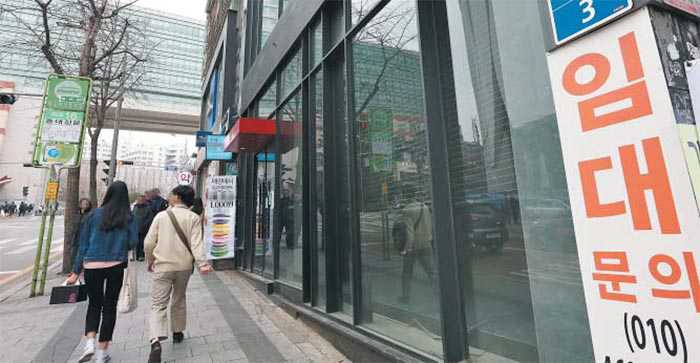Downtown Stores Thrive Thanks to Older Customers
27 March, 2019

Only shops in Seoul's financial district of Yeouido and glitzy Gangnam are still thriving even as the lights are going out in other commercial areas of Seoul.
The reason is an increase in spending by older consumers despite the financial crunch that is hitting particularly young customers. Real estate consultancy Avison Young analyzed Shinhan Card spending data in the fourth quarter of last year to arrive at the latest findings.
Areas around Gangnam Station, Myeong-dong, Hongik University and Yeouido are the five major commercial districts in Seoul, and spending in both Myeong-dong and Hongik University area plunged.
Hongik University area, which used to bustle with youngsters, saw sales drop 1.9 percent. Just a few years ago, it was dotted with fashionable restaurants that drew endless streams of young customers, but more and more stores are shutting down.
Retailers in Myeong-dong, too, have been suffering from declining sales, with total revenues in the area dropping 0.7 percent over the past year. Shops selling cheap cosmetics in particular saw sales plummet 37 percent, and clothing stores 11.8-percent decline as spending by their mainstay customers in their 20s fell.
Customers in their 20s account for about half of the sales around Hongik University area and their spending fell four percent. They also account for about one-third of total revenues at stores in Myeong-dong, and their spending there dropped almost seven percent.
Kim Sun-young at Avison Young said, "Consumers in their 20s are now flocking to tasty restaurants in Ikseon-dong in central Seoul, Songpa district in southern Seoul and other new areas, while buying cosmetics and apparel online, which is hollowing out the traditional commercial districts."
But older consumers in high-paying jobs in Yeouido and Gangnam keep spending. Stores in Yeouido saw sales rise the most since the average age of consumers there is 38.7 and the financial district pays the highest average wages in Korea.
Stores there saw sales rise 9.3 percent, and the number of shops grew 1.6 percent. It was not only restaurants that fared well but also stores selling health products, educational materials and beauty goods and services.
Spending by customers in their 50s in Yeouido rose 22 percent last year, which was the highest among all age groups. In Gangnam, which is home to the headquarters of several major conglomerates, store revenues rose 9.6 percent and shop numbers 6.1 percent.
The consultancy said the shorter working week led to an increased interest in leisure activities by office workers.
TAG(s):
